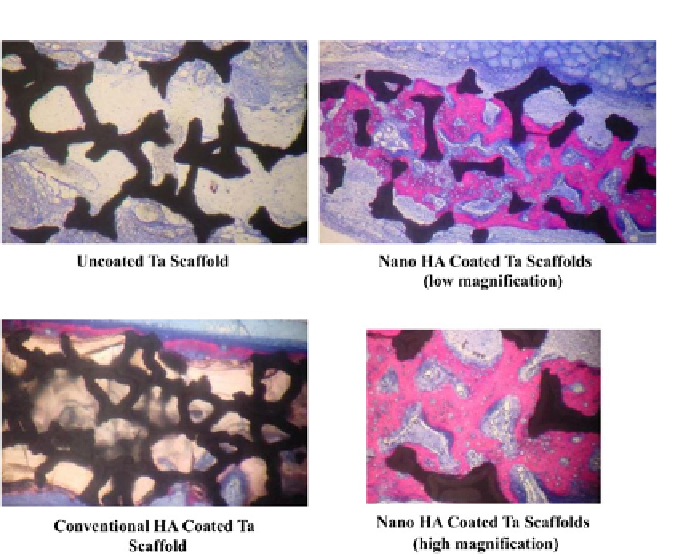Biomedical Engineering Reference
In-Depth Information
FIGURE 6.5
Histology of rat calvaria 2 weeks after the implantation of tantalum (Ta) scaffolds
coated with either nanophase or conventional HA. New bone infiltration occurred in greater amounts
on nano-HA-coated Ta than on either conventional HA-coated Ta or uncoated Ta (Red).
Adapted
and reprinted with permission from Liu and Webster.
75
(For interpretation of the references to
colour in this figure legend, the reader is referred to the online version of this topic)
For implant applications, nanoceramics and nanometals have been created
by decreasing the size of component such as particles, grains, or fibers. Differ-
ent techniques to create nanometer surface features on polymers such as chemi-
cal etching, mold casting, e-beam lithography, and polymer demixing
166,167
all show promise for orthopedic applications. The versatility of biodegradable
polymer nanomaterials such as PLGA
168,169
in spite of increased osteoblast
functions and decreased fibroblast functions on nano compared to conventional
materials is that polymers may help rehabilitate damaged bone tissue due to
their controllable biodegradability.
168
In this manner, while the natural tissue
regenerates, these polymers degrade in vivo into nontoxic, natural metabolites
(such as lactic acid and glycolic acid) which enter the metabolic pathways of the
tricarboxylic acid cycle and are eventually eliminated from the body as carbon
dioxide and water.
170
6.3.1.4 Carbon Nanofiber/Polymer Composites
The bone is the hardest tissue providing mechanical support to our body,
protecting other internal organs, and producing and storing blood cells in

